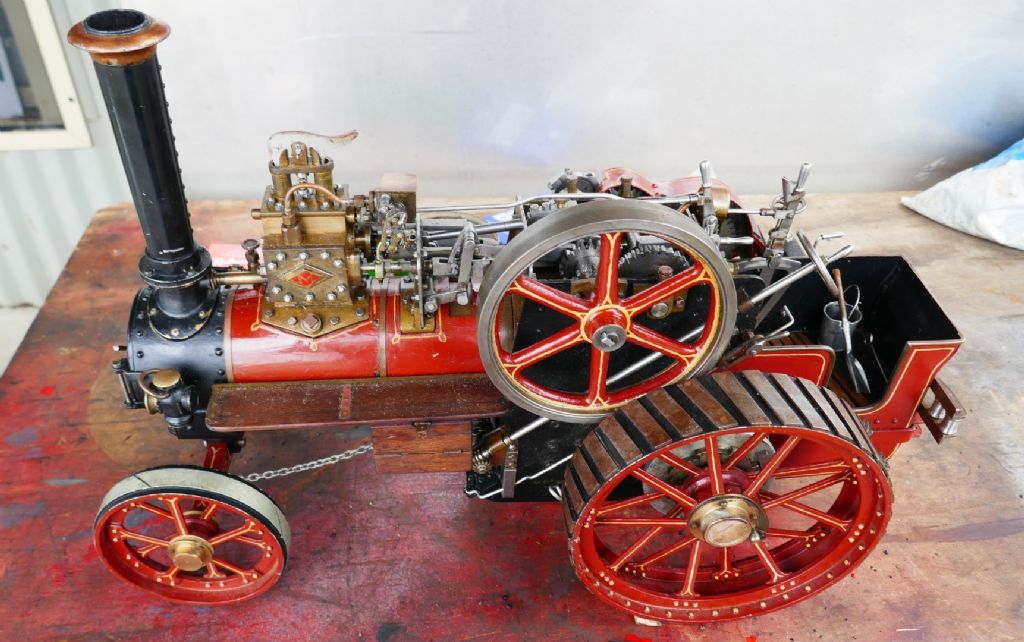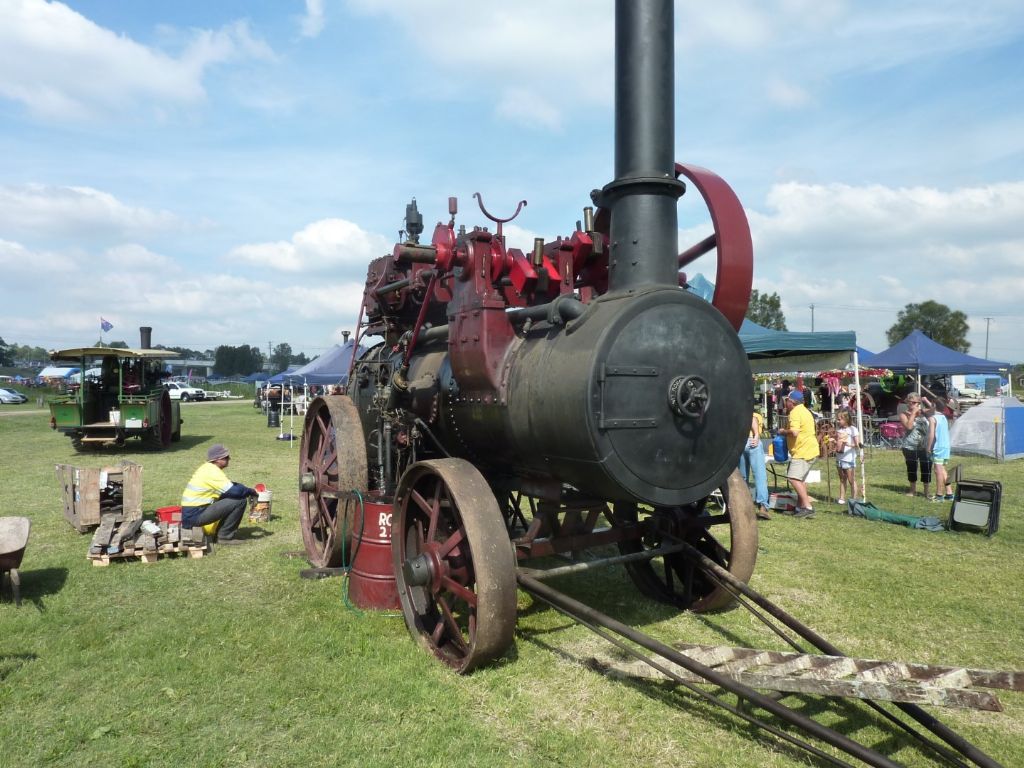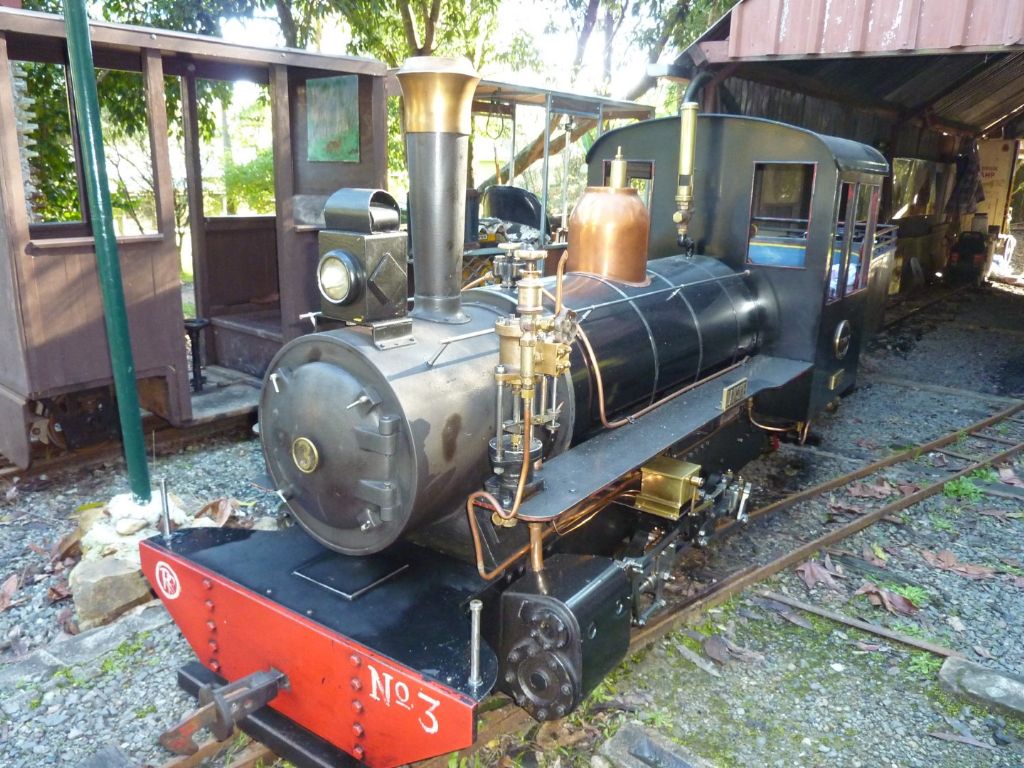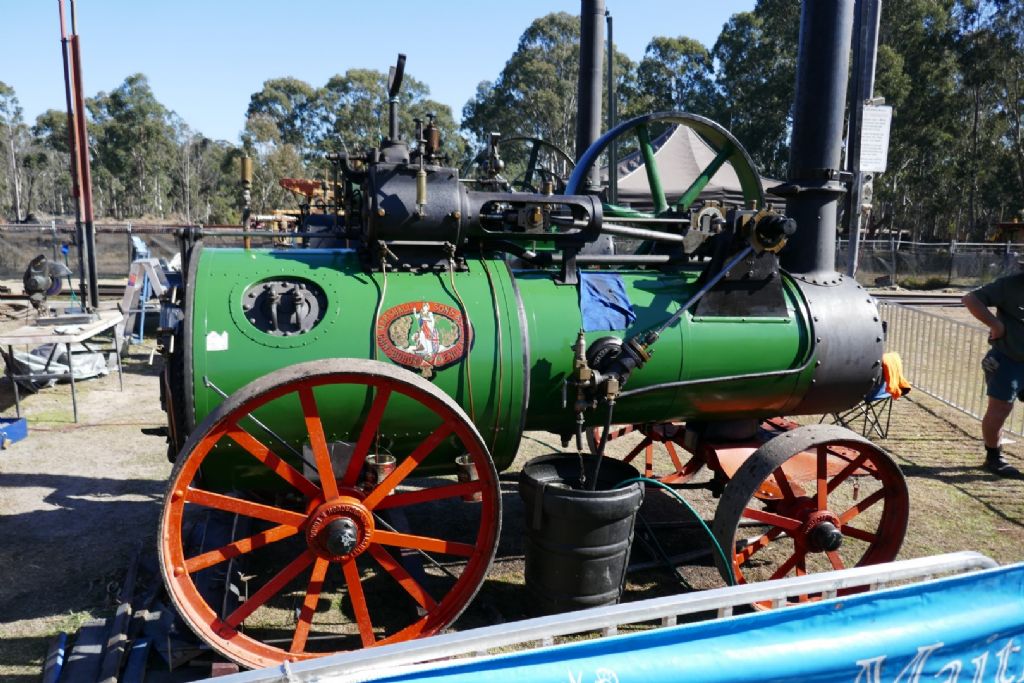Although owners of the larger 3-inch scale and bigger miniatures can emulate full-size practice by using a long extension-chimney and natural draught, it is not very likely to succeed on an engine of 'Minnie' size.
I must admit I've not heard of using hot water first off, but that will only accelerate steam-raising a bit once the fire is burning properly. It won't help the fire to burn.
Many do use paraffin-soaked wood for firing up miniature engines. I've done so, many times, but it is messy and sooty even before adding any coal. The type of wood is not very significant, though a soft wood like pine is more absorbent of the accelerent.
Another long-established primer is charcoal soaked in meths.
Prepare such fire-starting materials well in advance – say, the day before.
'
Surprisingly, I have seen ex-computer cooling fans on suitable chimney adaptors, for direct induced-draught. Despite plastic rotors on delicate little motors, they seem fairly able to withstand such 'orrible operating conditions. The exhaust gas temperature is not as high as might be expected, at least during steam-raising, but I would not like to forecast such fans' longevity in this new career!
I have also known a freelance traction-engine whose blower pipe was fitted with a branch-pipe terminating in a connection that could be closed with a simple screwed cap. This was connected to a small compressor for steam-raising, using the engine's own blower (or 'steam-jet' as apparently more often called in TE practice). Though feasible technically, the steam-jet's valve and pipe is usually very noticeable on a traction-engine, so such a modification is poor aesthetically.
Instead, use an extension-chimney with its own air-jet as Dave suggests. Of course, the jet should be concentric and parallel to the chimney.
'
I don't know the 'Minnie' design but the feed-pump on both full-size and miniature traction-engines is usually mounted somewhere slightly away from the boiler so does not become unduly warm. Typically it's on the hornplate just aft of the backhead – near the crankshaft and accessible for servicing. Robey did put it on a bracket on the firebox side, though, on their engines.
It's really the injector that's fussy about therms so is normally low down on the bunker side, below the man-stand, to keep it cold. (Assuming no leak back through the delivery clack-valve or the steam-valve.)
 Harry Wilkes.
Harry Wilkes.







